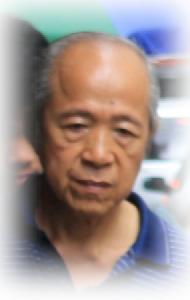 The descendants of mainland and island Chinese who migrated to the Philippines are collectively called Tsinoys, Chinoys, or Chinese Filipinos. However, they can be divided into three groups by the geographic location and language of their origin: Fujianese, Cantonese, and Mandarin. There are Chinese communities in practically all parts of the archipelago.
The descendants of mainland and island Chinese who migrated to the Philippines are collectively called Tsinoys, Chinoys, or Chinese Filipinos. However, they can be divided into three groups by the geographic location and language of their origin: Fujianese, Cantonese, and Mandarin. There are Chinese communities in practically all parts of the archipelago.
Cantonese Chinese
The forebears of many Cantonese originated from Taishan. It is said that a minority of the Cantonese who have Portuguese ancestry, and are called Macanese. Some ghettoes of Cantonese are found in Manila’s Santa Mesa and Tondo areas.
The Cantonese Filipinos are not as prosperous as their Fujianese counterparts. Although they speak Cantonese at home or in their circle, they are raised to speak a Min Nan dialect, which is often the only working language in general Chinese associations, with the exception of those in the Cantonese society.
Fujianese Chinese
About 98.5% of all unmixed Chinese in the Philippines come from Fujian province. Since most of them speak Fujianese, the traditional migrant network can be a very useful social capital for them.
Chinese had resided in what was to become the Philippines long before the Spanish colonizers arrived. However, there are no records of the exact period of their arrival. The Chinese make up 2-4% of the country’s population, and most of them are either Fujianese or Cantonese dialect groups. Field research on the tombstones in Chinese cemeteries nationwide reveals that Fujianese comprise nearly 89%; Cantonese, 10%; and others, 1%.
Southern Fujian is home to three main Min Nan dialects: Quanzhou, Xiamen, and Zhangzhou. Currently, most Fujianese in the Philippines speak the Quanzhou and Zhangzhou dialects. Most of those who live in Metro Manila speak Quanzhou, while those in southern Philippines speak the Xiamen dialect.
Most Fujianese Filipinos are urban dwellers, and about 60% live in Metro Manila. Others live in other large cities such as Cebu, Davao, and Baguio. Many Fujianese Filipinos are engaged in business, ranging from small retail shops to international corporations; several are at the helm of the prominent businesses in the Philippines. Many important Chinese associations are dominated by the Fujianese Filipinos due to their large population.
The younger generations of Fujianese Filipinos (born after the 1990s) prefer to communicate in Tagalog and English, although they still identify themselves as Chinese.
Mandarin Chinese
Most Mandarin Chinese reside in the Metro Manila area. Their number is relatively small, so that very few Chinese speak Mandarin (Putonghuah or Guoyu). It is also difficult to identify the Mandarin Chinese, as many of them speak different Chinese dialects, depending on their social or economic station.
There has been a steady influx of Chinese emigrants to the Philippines since the late 1970s. Most are from Fujian, but some come from Guangxi, Shangdong, Liaoning, Heilongjiang, Jiangsu, and other places outside Fujian and Canton, and speak Mandarin.
The majority of Mandarin Chinese live in the Chinatown of Binondo, Manila. They do not share common cultural grounds with the other Chinese groups even if they have a similar economic lifestyle — supporting their families by operating restaurants, retail stores, and the like. Mandarin Chinese have not yet established their own associations because they are so different. Furthermore, they are not as prosperous as their Fujianese or Cantonese counterparts and do not hold the same social status. In some cases, they just opt to learn Fujianese (Hokkien) or Cantonese, and even marry into such families.
